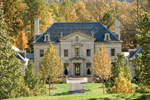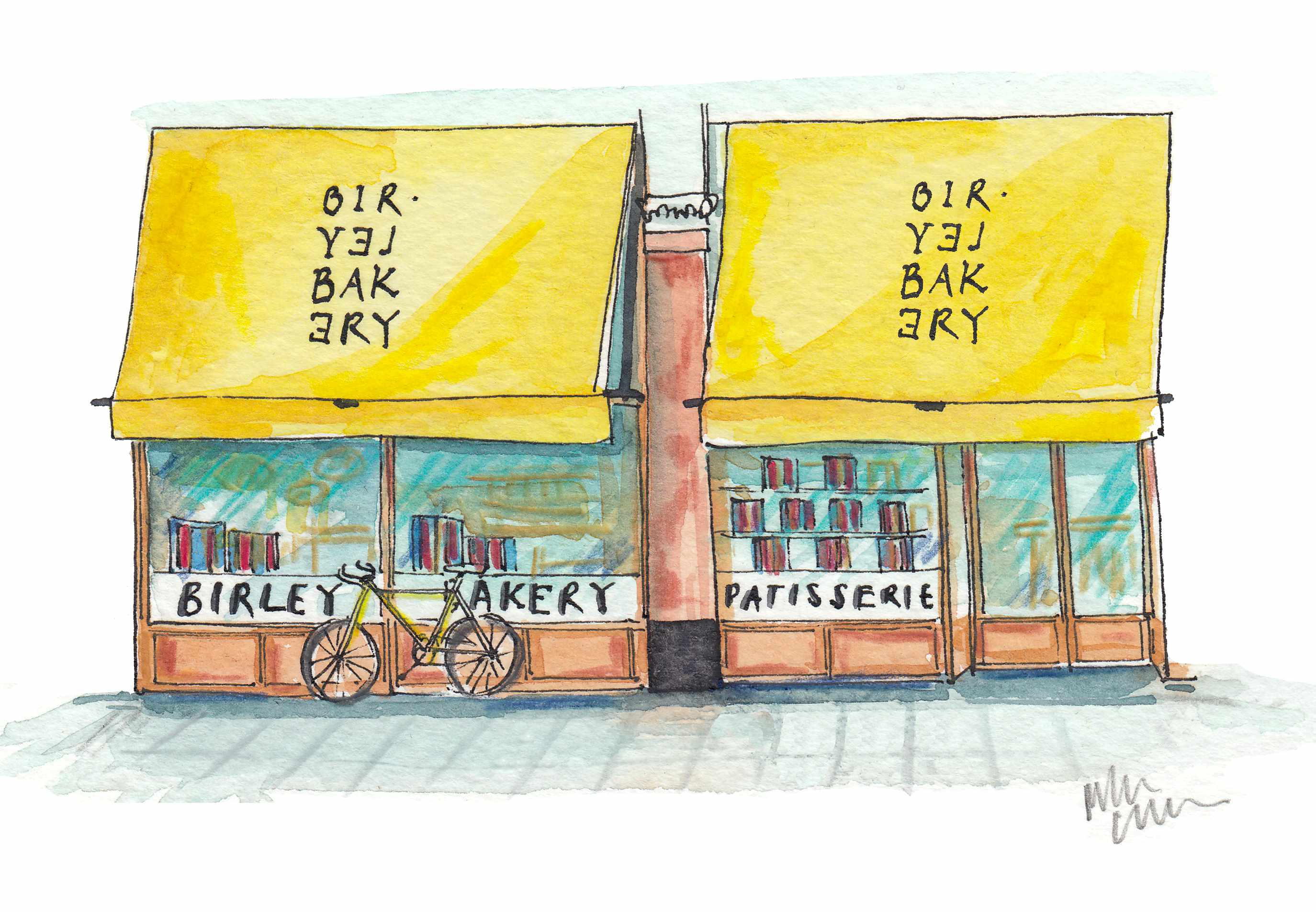Unveiling Virginia's new hunting lodge
Harry Mount visits Wayside Manor, an exquisite new hunting lodge designed by one of the leading US practices specialising in Classical architecture


Catching a glimpse of Wayside Manor in its dell above the Little River in Middleburg, Virginia, you could be forgiven for thinking you had stumbled on a little piece of England. Wayside has unmistakable elements of Lutyens, Vanbrugh, Pratt and Wren, outside and in. The details skip across several centuries, but the immediate impact, with its symmetrical composition and gently advanced central bays, dormer windows and wings, is pure English Baroque. The house is built in a breathtaking place.
All around are the thickly wooded, gently humped hills of Fairfax County. This has been the epicentre of American hunting country for three centuries. An easement for the local hunt runs close to the house, and the American international dressage team has its headquarters in Middleburg. Fairfax County draws its name from English roots, as it was named after Lord Fairfax, the 17th-century Yorkshire-born landowner who owned the Northern Neck in Virginia, stretching from the Potomac River to the Rappahannock River, including the Shenandoah Valley. The brief for Franck Lohsen McCrery (now Franck Lohsen), the Washington firm of Classical architects, was to provide an American manorial-style estate house. It was to give a deep nod to the past, at the same time as accommodating all modern conveniences.
Hidden from the road on the hill up above, the house is sited in a small estate of 100 acres, incorporating pools, ponds, a walled garden, allées, drives, lawns and fields. The client also specified the best building materials be used. Within this brief, the architects were given free rein to stamp their own mark on the place. They opted for cream Indiana limestone for the exterior, with a granite base and thick, rough, grey Georgia-style slate roofs. The windows are mahogany and the external doors bronze. Single-storey wings on either side of the entrance front accommodate a three car garage to the left and an entertainment room to the right. The wings enclose a motor court with a central fountain, around which cars have plenty of room to turn.
The broken Doric pediment of the entrance porch, which is reflected in the larger broken pediment on the floor above, acknowledges a debt to Vanbrugh's Blenheim Palace entrance front. Towering chimneys continue the echoes. 'This isn't merely pastiche,' said Arthur Lohsen. 'We're happy if you see any references to particular buildings, but we don't slavishly copy other architecture.' Wayside Manor's garden elevation ingeniously reverses the pattern of the front, with pairs of side bays brought forward, breaking an Ionic gallery in three, and enclosing a central roof terrace. The rear elevation looks over a generous oval lawn, designed to receive rough treatment: it is the venue for the family's annual American football game at Thanksgiving. An asymmetrical element is introduced in one wing with a one-storey, bow-windowed extension, inspired by Lutyens. It houses a breakfast room, which leads out into the walled garden.
Inside, Wayside Manor's central axis runs from the porch, through a central Ionic pilastered hall, to the rear entrance. A gallery along the rear connects the principal ground-floor rooms, ending in morning and evening corner pavilions. The evening pavilion leads through into the library, which is panelled with wall-to-ceiling American walnut casework.
Off the hall, through an ante-room flanked by a bathroom and a coatroom, is the living room. Here are hung several paintings from the owner's collection of 18th-century Dutch pictures, bought with the help of the British art dealer Richard Green. Also in the room is a rare 1725 grandfather clock from Liege. With its engaged Ionic pillars, the chimneypiece is a new commission, carved from Carrara marble. The owners went to Italy themselves to select the stone. A pair of Doric pilasters with their own entablature stands either side of the fireplace.
The deep brick fireplace is designed along the principles laid down by Count Rumford in the 18th century, drawing the maximum amount of oxygen from the room to feed the fire. Across the hall, on the other side of the staircase, which rises through the full three above-ground storeys of the house, is the dining room. Painted a deep blue with simple white panelling and a handsome, consoled fireplace, the dining room contains several equestrian paintings, including two by Alfred Munnings Start of the Cambridgeshire, Newmarket and Saddling Up.
Sign up for the Country Life Newsletter
Exquisite houses, the beauty of Nature, and how to get the most from your life, straight to your inbox.
The dining room leads through to a large kitchen and another dining table, placed in the Lutyens-inspired bow window to catch maximum light. The spirit of Lutyens returns again in the adjoining entertainment or family room, designed with the owners' children and grandchildren in mind. Beneath a deeply coffered cherry-wood ceiling after Lutyens' Castle Drogo a pool table and flat-screen television sit beside a mammoth stone chimneypiece. This chimneypiece is connected to a double flue, with its twin on the outside of the house for barbecues. Beside the external fireplace area is a small kitchen garden, bordered by a 10ft brick wall, designed to keep out the deer from the surrounding woods.
The garden is anchored by several serpentine paths meandering towards a Doric pergola. The inspiration came from the great Classical houses of two of America's founding fathers Thomas Jefferson's Monticello and George Washington's Mount Vernon, both also in Virginia. The first and second floors of the house, containing bedrooms and bathrooms, ranged around the central staircase, are designed to get as much light as possible. From the master bedroom, there are views across the Virginia hills to Bull Run, the site of a crucial battle of the Civil War. On the first-floor landing, the eye is led up and along an allée towards the crest of the hill, where an eye-catching obelisk is planned.
The basement contains a further entertainment room, lined with vintage posters. A geothermal heating and cooling system, using water drawn from 60 wells 375ft beneath the house, keeps costs at a minimum in country that hits more than 90˚F in the summer and gets snow in winter. Franck Lohsen McCrery established itself quickly as one of America's leading Classical architectural companys. The 11-strong firm was founded in January, 2001, by Michael M. Franck, Arthur C. Lohsen and James McCrery II (in 2006, it became Franck Lohsen and James McCrery set up independently). The three men met when working together in the office of another leading American Classicist, Allan Greenberg, based in Washington DC.
Among their commissions has been a daily mass chapel for the St Joseph Cathedral in Sioux Falls, South Dakota. The chapel is an essay in simple Clas-sicism, with Doric pilasters leading to a Composite-columned portico over the altar. An icon painter from Moscow painted the picture of Christ over the altar. The architects also carried out a full renovation of the Gothic cathedral's 1910 fabric. Other religious projects include a Ukrainian-rite church in the South Georgia countryside. At the University of St Mary of the Lake Mundelein, Illinois, the firm was responsible for the expansion of the McEssy Library, with a balustraded five-bay façade reminiscent of Wren's Trinity College, Cambridge. Two pergolas frame the cloister garden in front of the library.
Inside, the reading room, with strong echoes of the libraries at Christ Church and Worcester College, Oxford, consists of a long double-height hall, flanked by a two-storey range of book stacks, with pilasters below. The niches above the stacks contain newly commissioned busts of the Archbishop of Chicago and the late Pope John Paul II. Many of the company's projects have come from universities and churches. US religious institutions such as St Francis Friary in Birmingham, Alabama, which was based on that in Assisi clearly relish historical links.
Private house builders on the eastern seaboard and in New England are also keen to preserve the American vernacular: clapboard houses and Gibbsian churches. However, the establishment shies away from Classicism in large, public works. The firm's ideas for Ground Zero in New York were rejected in favour of Daniel Libeskind's Modernist Freedom Tower.
The alternative plans were for a Classical piazza, Liberty Square, presided over by two monumental statues representing history and memory, guarding
a draped catafalque. The statuary was going to be designed by the Scottish Realist sculptor Alexander Stoddart. Monuments to firemen and police were planned, and 'low-rise' skyscrapers were incorporated in place of the Twin Towers, restoring a human scale to lower Manhattan. Other plans drawn up in the firm's handsome brick headquarters in downtown Washington have included a theoretical scheme to transform New York's Minimalist Lincoln Centre on the Upper West Side of Manhattan. A Classical piazza was envisaged, with a Palladian porticoed palace, flanked by arcaded wings opening up onto Broadway.
The firm's largest plan at present is for South Capitol Street, a principal thoroughfare leading from central Washington to Nicosia in the run-down south-east of the city. A Classical bascule bridge would be laid across the Anacostia River to form a mile-long grand boulevard, lined with trees and fountains, with views to the great obelisk of the Washington Monument. Classical precedent is strong in the city, which, at its heart, remains imperial, reflecting the desires of the founding fathers to build a home for a government based on the Roman Republic. The struggle of this young practice to break into public projects adds a certain poignancy to the charm of the quintessential country house it has created in the sylvan Virginian landscape.
Frank Lohsen: 00 1 202 223 9449; www.flarchitects.com
Country Life is unlike any other magazine: the only glossy weekly on the newsstand and the only magazine that has been guest-edited by HRH The King not once, but twice. It is a celebration of modern rural life and all its diverse joys and pleasures — that was first published in Queen Victoria's Diamond Jubilee year. Our eclectic mixture of witty and informative content — from the most up-to-date property news and commentary and a coveted glimpse inside some of the UK's best houses and gardens, to gardening, the arts and interior design, written by experts in their field — still cannot be found in print or online, anywhere else.
-
 'That’s the real recipe for creating emotion': Birley Bakery's Vincent Zanardi's consuming passions
'That’s the real recipe for creating emotion': Birley Bakery's Vincent Zanardi's consuming passionsVincent Zanardi reveals the present from his grandfather that he'd never sell and his most memorable meal.
By Rosie Paterson
-
 The Business Class product that spawned a generation of knock-offs: What it’s like to fly in Qatar Airways’ Qsuite cabin
The Business Class product that spawned a generation of knock-offs: What it’s like to fly in Qatar Airways’ Qsuite cabinQatar Airways’ Qsuite cabin has been setting the standard for Business Class travel since it was introduced in 2017.
By Rosie Paterson